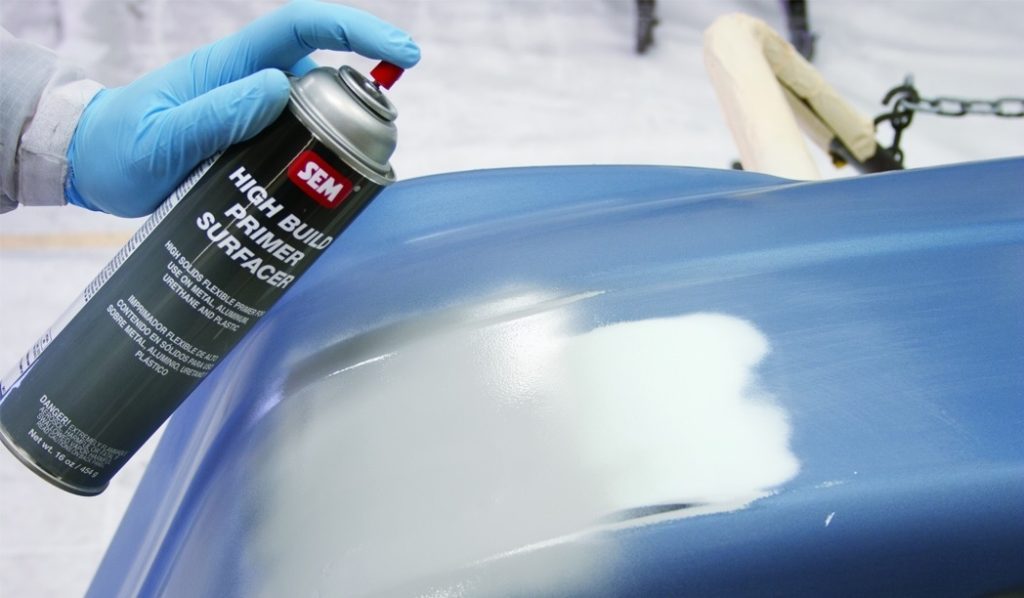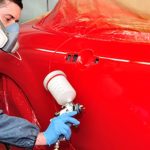Embarking on a painting project for your plastic surfaces brings a wave of excitement, but choosing the right primer can be a perplexing journey. Is self-etching primer up to the task? In this comprehensive guide, we’ll unravel the mysteries surrounding the application of self-etching primer on plastic and equip you with the knowledge for a successful painting endeavor.
Table of Contents
- Unpacking the Self Etching Primer
- The Plastic Predicament
- Navigating the Process
- Potential Pitfalls and How to Steer Clear
- Beyond the Basics
- Expert Tips for Mastering Self Etching Primer on Plastic
- Frequently Asked Questions About Using Self Etching Primer on Plastic
- 1. Can You Use Self Etching Primer on All Types of Plastic?
- 2. How Do I Prepare Plastic Surfaces for Self Etching Primer?
- 3. Is Abrasion Necessary for Plastic Surfaces?
- 4. What Happens If I Use the Wrong Self-Etching Primer on Plastic?
- 5. Can I Apply Self Etching Primer Directly to Unpainted Plastic?
- 6. How Many Coats of Self Etching Primer Should I Apply?
- 7. Do I Need to Sand Between Primer Coats on Plastic?
- 8. Can I Paint Over Self Etching Primer on Plastic Without a Topcoat?
- 9. Is Self Etching Primer Weather-Sensitive?
- 10. Can I Use Self Etching Primer on Outdoor Plastic Furniture?
- Conclusion
Unpacking the Self Etching Primer
Self-etching primer has long been celebrated for its remarkable adhesion capabilities, particularly on metal surfaces. However, when it comes to plastic, the dynamics shift, prompting us to explore the intricacies of this primer type and its compatibility with plastic materials.
The Plastic Predicament
Plastics come in a myriad of compositions and porosities, making them a unique canvas for paint. While self-etching primer adheres admirably to metals, applying it to plastic necessitates a nuanced approach. Let’s delve into the factors that come into play.
Factors Affecting Adhesion
- Plastic Composition: The type of plastic matters significantly. Polyethylene, polypropylene, and PVC are common plastics, each with its own set of properties that can impact primer adhesion.
- Porosity Variation: Unlike metal, plastic surfaces may vary in porosity. Some plastics possess a smooth surface, while others may have a more porous texture, affecting how well the primer bonds.
1. Thorough Surface Inspection
Before initiating the painting process, conduct a meticulous inspection of the plastic surface. Look for imperfections, cracks, or irregularities that might hinder the primer’s effectiveness.
2. Cleaning and Degreasing Ritual
Ensuring a pristine surface is crucial. Clean the plastic thoroughly, using a mild detergent and water solution or a dedicated plastic cleaner. This step removes any dirt, dust, or grease that could compromise adhesion.
3. The Art of Abrasion
To enhance adhesion, gently abrade the plastic surface using fine-grit sandpaper. This process creates micro-abrasions, providing a textured foundation for the primer to grip onto.
4. Mastering Primer Application
Apply the self-etching primer with precision. Opt for light, multiple coats rather than a heavy application. Allow each coat to dry thoroughly before adding the next layer.
5. Embracing Patience During Drying
Patience is a virtue in the painting process. Follow the manufacturer’s recommendations for drying times meticulously. Rushing this stage could lead to issues like peeling or uneven application.
Potential Pitfalls and How to Steer Clear
1. Primer Selection Prudence
Choosing the right self-etching primer is paramount. Confirm its compatibility with plastic surfaces by checking the product label or consulting with the manufacturer for specific recommendations.
2. Surface Preparation: The Unsung Hero
Neglecting proper surface preparation is a cardinal sin. Invest time in cleaning and abrading the plastic surface; it’s the foundation for optimal adhesion.
3. Guarding Against Impatience
Resist the urge to expedite the drying process. Each coat needs adequate time to cure, ensuring a seamless and durable finish.
Beyond the Basics
1. Experimenting on a Small Scale
Before committing to larger projects, conduct a small-scale experiment on an inconspicuous area. This allows you to assess the primer’s compatibility and adherence on your specific plastic surface. (See Also: What Are Bondo Hardener Substitutes? Discover Effective Alternatives)
2. Understanding Plastic Types
Dive deeper into the realm of plastics. Each type has its characteristics, and understanding them empowers you to make informed decisions regarding primer selection and application techniques.
3. Exploring Alternative Priming Options
If self-etching primer seems like a risky choice for your specific plastic, consider alternative priming options tailored for plastic surfaces, such as adhesion promoters or plastic primers.
Expert Tips for Mastering Self Etching Primer on Plastic
When it comes to painting plastic surfaces with self-etching primer, a few expert tips can make all the difference. Whether you’re a seasoned DIY enthusiast or a novice painter, these insights will elevate your painting game and ensure a flawless finish.
1. Know Your Plastic
Before diving into the painting process, identify the type of plastic you’re working with. Different plastics have distinct properties, and understanding them will guide your primer selection and application approach.
2. Prep Like a Pro
Surface preparation is non-negotiable. Clean the plastic meticulously, remove any imperfections, and use fine-grit sandpaper to create a textured surface. This groundwork sets the stage for optimal primer adhesion.
3. Choose the Right Primer
Not all self-etching primers are created equal. Ensure your chosen primer explicitly mentions compatibility with plastic surfaces. Check the product label for recommended plastic types and follow the manufacturer’s guidelines.
4. Light and Layered Application
Opt for light, multiple coats rather than a heavy application. This technique promotes even coverage and prevents issues like drips or uneven drying. Allow each coat to dry thoroughly before applying the next.
5. Patience Pays Off
Rushing the drying process can compromise the entire paint job. Follow the recommended drying times on the primer’s label. Patience ensures a durable finish that withstands the test of time.
6. Trial on a Small Scale
Before committing to a larger project, conduct a trial on a small, inconspicuous area. This allows you to assess the primer’s compatibility with your specific plastic and make adjustments if needed.
7. Explore Alternative Priming Options
If self-etching primer proves challenging for your plastic type, consider alternative priming options designed specifically for plastic surfaces. Adhesion promoters or plastic primers might be viable alternatives. (See Also: Can You Clear Coat Polished Aluminum? Tips for Protecting and Enhancing Shine)
8. Protect Surrounding Areas
During the priming and painting process, safeguard surrounding areas from overspray. Use masking tape and drop cloths to prevent unintentional paint application on adjacent surfaces.
9. Seal the Deal with a Topcoat
While self-etching primer provides a solid foundation, consider applying a topcoat for added protection and aesthetic appeal. Choose a topcoat compatible with plastic surfaces for a comprehensive finish.
10. Weather Matters
Ideally, undertake your painting project in optimal weather conditions. Extreme temperatures, high humidity, or direct sunlight can affect primer adhesion and drying times.
Armed with these expert tips, you’re well-equipped to tackle your plastic painting project with confidence. Remember, attention to detail and a patient approach are the keys to achieving a professional-looking finish that stands the test of time. Happy painting!
Frequently Asked Questions About Using Self Etching Primer on Plastic
Navigating the realm of self-etching primer on plastic can spark numerous questions. To shed light on common queries and provide clarity, here’s a roundup of frequently asked questions with detailed answers.
1. Can You Use Self Etching Primer on All Types of Plastic?
Self-etching primer’s compatibility varies with different plastics. While it can work on some, it may not adhere well to others. Understanding your specific plastic type is crucial; experiment on a small area first to ensure compatibility.
2. How Do I Prepare Plastic Surfaces for Self Etching Primer?
Proper surface preparation is key. Clean the plastic thoroughly with a mild detergent, remove imperfections, and use fine-grit sandpaper for abrasion. This creates a textured surface, enhancing the primer’s adhesion.
3. Is Abrasion Necessary for Plastic Surfaces?
Yes, abrasion is essential. Gently sanding the plastic surface with fine-grit sandpaper promotes adhesion by creating micro-abrasions. This step is particularly important for smooth plastic surfaces.
4. What Happens If I Use the Wrong Self-Etching Primer on Plastic?
Using the wrong primer may result in poor adhesion, peeling, or an uneven finish. Always choose a self-etching primer explicitly labeled for plastic surfaces, and follow the manufacturer’s guidelines.
5. Can I Apply Self Etching Primer Directly to Unpainted Plastic?
Yes, you can apply self-etching primer directly to unpainted plastic. Ensure the surface is clean, follow proper abrasion techniques, and apply the primer in light, even coats for optimal adhesion.
6. How Many Coats of Self Etching Primer Should I Apply?
Opt for light, multiple coats rather than a heavy application. Two to three coats are usually sufficient, but it depends on the specific primer and plastic type. Allow each coat to dry before applying the next. (See Also: Choosing the Right Thinner for Raptor Liner: A Comprehensive Guide)
7. Do I Need to Sand Between Primer Coats on Plastic?
Sanding between primer coats isn’t mandatory but can enhance the final finish. Use fine-grit sandpaper to lightly sand the surface between coats for a smoother result.
8. Can I Paint Over Self Etching Primer on Plastic Without a Topcoat?
While self-etching primer provides a solid base, applying a topcoat is recommended. A topcoat adds an extra layer of protection, durability, and aesthetic appeal to the painted plastic surface.
9. Is Self Etching Primer Weather-Sensitive?
Yes, weather conditions matter. Ideally, paint in moderate temperatures and avoid extreme conditions. High humidity or direct sunlight can impact drying times and primer adhesion.
10. Can I Use Self Etching Primer on Outdoor Plastic Furniture?
Yes, self-etching primer can be used on outdoor plastic furniture. Ensure the primer is suitable for outdoor use, and consider applying a UV-resistant topcoat for added protection against the elements.
Armed with these answers, you’re better prepared to tackle your plastic painting project with confidence. If you have more questions, feel free to experiment on a small scale or consult with a professional for personalized advice. Happy painting!
Conclusion
In the quest to determine if self-etching primer is suitable for plastic, a cautious approach is warranted. Armed with an understanding of plastic composition, meticulous surface preparation, and a dash of patience, you can achieve a paint job that not only looks impressive but also endures the test of time.
Remember, the journey to a successful paint project on plastic is an art form, and attention to detail is the brushstroke that sets the masterpiece apart. So, with confidence and curiosity, venture into the world of plastic surface painting and watch your vision come to life. Happy painting!


